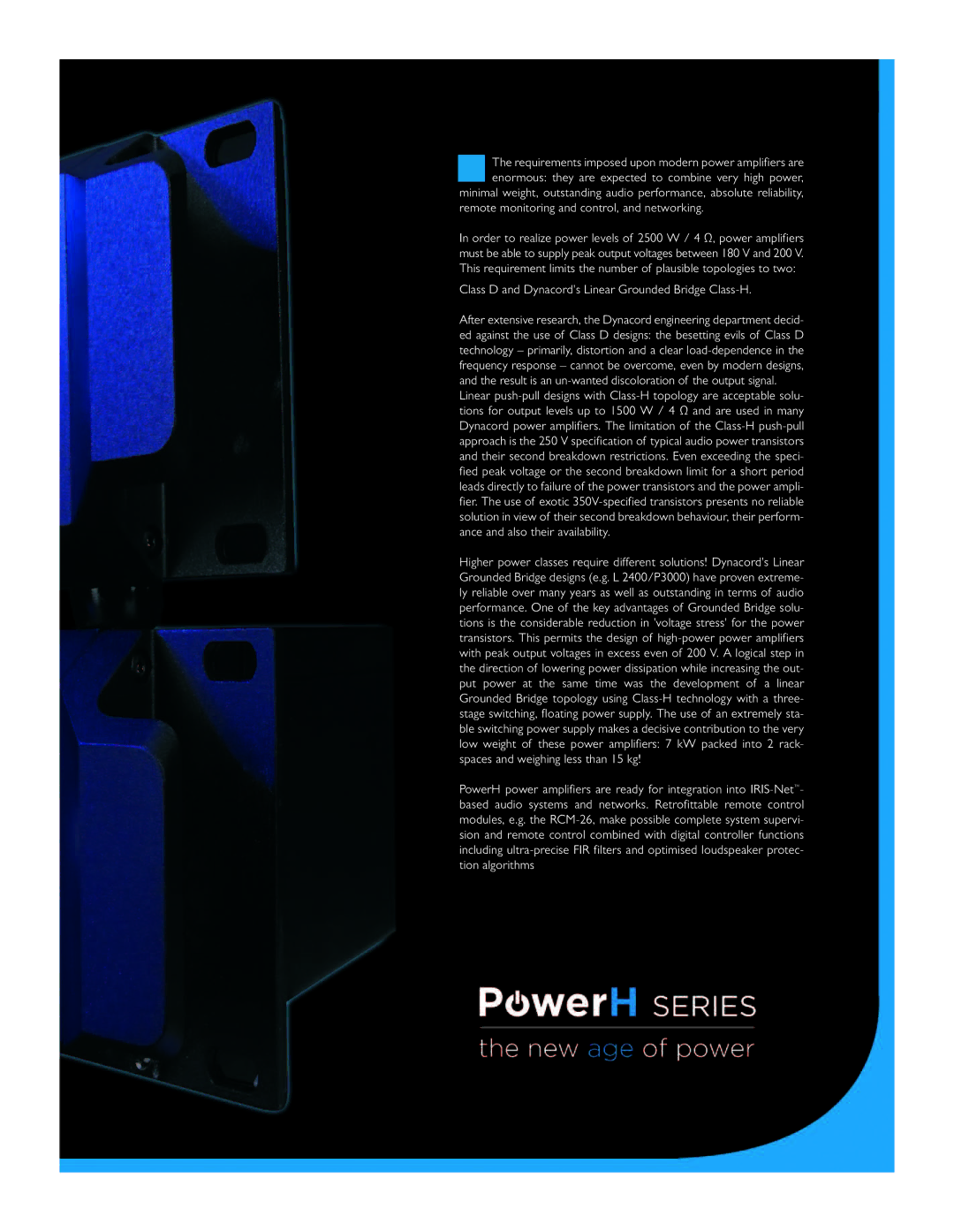PowerH Series specifications
The Dynacord PowerH Series is an exceptional line of powered loudspeakers designed to meet the rigorous demands of professional audio environments. Built for performance, this series is particularly favored for live sound applications, installation settings, and dynamic performances. The PowerH Series combines cutting-edge technology with impactful sound engineering, providing a solution for sound technicians and performers alike.At the core of the PowerH Series is its robust, high-performance amplification system. Each speaker is equipped with a state-of-the-art Class D amplifier, ensuring high efficiency and minimal distortion at elevated volume levels. This allows the system to deliver clear, powerful sound across various frequency ranges, from thumping bass to crisp high frequencies. The amplifier is matched perfectly with custom-designed transducers, contributing to the series' remarkable frequency response and dynamic range.
One of the standout features of the PowerH Series is its intelligent DSP (Digital Signal Processing). This technology optimizes the speaker's performance in real time, enabling intelligent loudspeaker management including FIR filtering, which ensures minimal phase distortion. Additionally, the DSP offers various pre-set modes tailored for specific applications such as live sound, playback, and more. Users can also customize settings through a user-friendly interface, making it easy to adapt the speakers to different acoustic environments.
Moreover, the PowerH speakers are built ruggedly, with a durable wooden enclosure that not only enhances visual appeal but also improves resonance control. The robust construction ensures that the speakers can withstand the rigors of touring and installation use. Lightweight and easy to transport, they feature ergonomic handles that allow for simple maneuverability.
Connectivity options are plentiful, including XLR, TRS, and RCA inputs which make it easy to interface with mixers, amplifiers, and other sound gear. The series also includes comprehensive output options for linking multiple speakers, facilitating scalable sound setups for larger venues.
In conclusion, the Dynacord PowerH Series exemplifies a blend of innovative technology, practical design, and superior sound quality. Whether for a concert stage, corporate event, or installation in a venue, these powered loudspeakers are engineered to deliver remarkable audio experiences, setting a standard in the professional audio industry. With their advanced features and reliable performance, the PowerH Series continues to be a favored choice among audio professionals worldwide.

